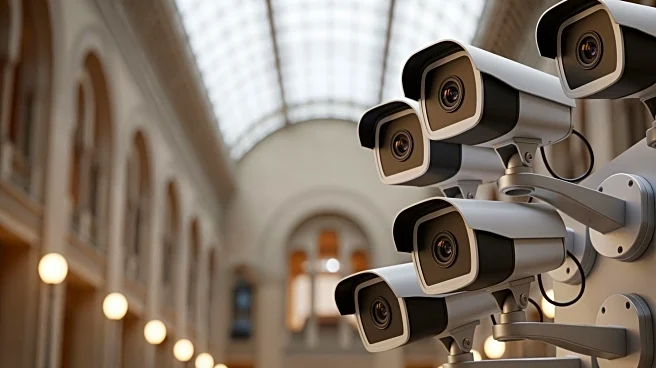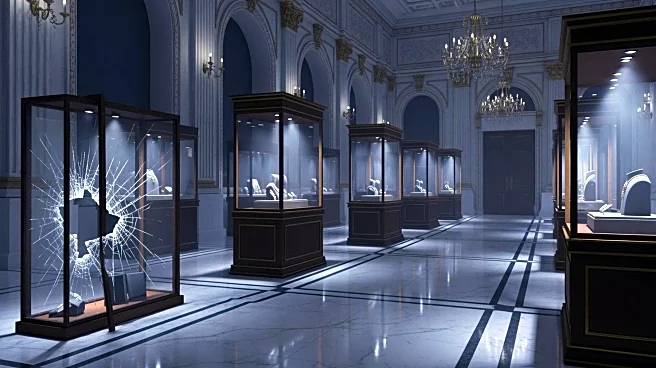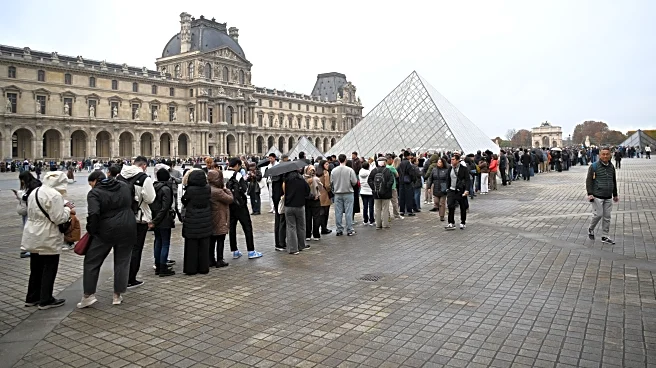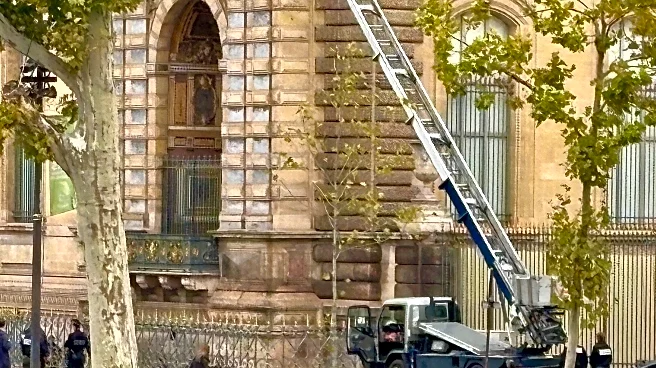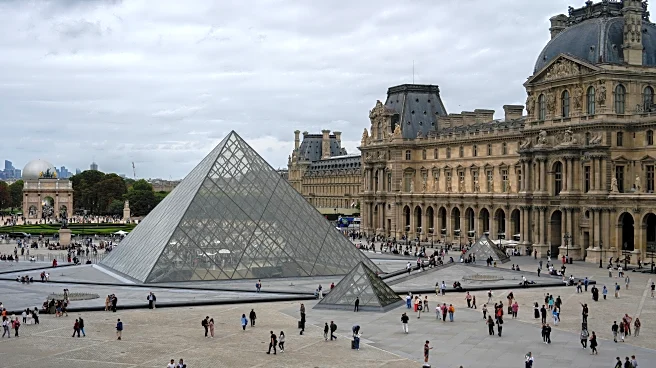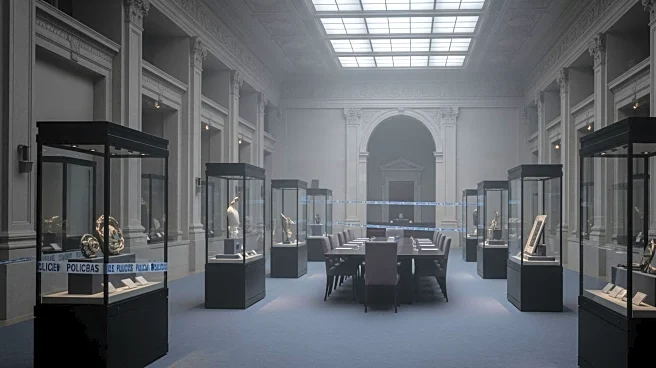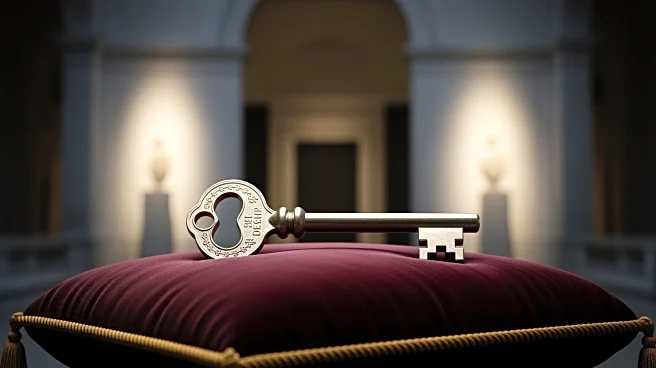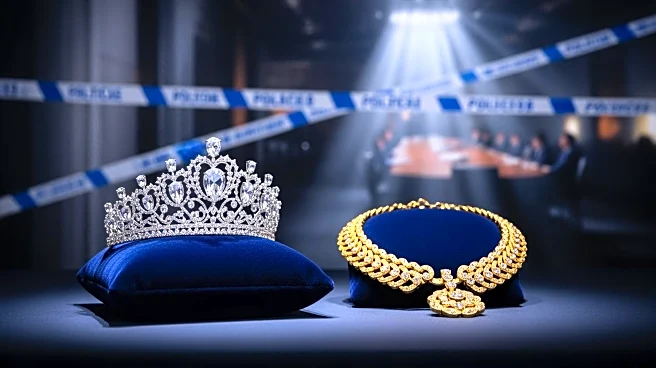What's Happening?
The Louvre Museum, originally constructed as a fortress in the late 12th century, has been the target of several high-profile art thefts over the years. The most famous of these was the 1911 theft of Leonardo da Vinci's Mona Lisa by Italian handyman Vincenzo
Peruggia, who was caught trying to sell the painting 28 months later. Recently, the museum experienced another significant robbery, where thieves stole French jewels of 'inestimable value.' This incident follows a history of thefts, including the 1998 disappearance of Jean Baptiste Camille Corot's Le Chemin de Sèvres, a 19th-century landscape painting that remains unrecovered. The theft of the Corot painting highlighted security vulnerabilities, as it was taken from a room without surveillance cameras. Despite efforts to enhance security, including a proposed increase in the security budget, the museum has faced challenges in fully implementing these measures.
Why It's Important?
The recent theft at the Louvre underscores ongoing security challenges faced by major cultural institutions. The loss of priceless jewels not only represents a significant cultural and historical loss but also raises concerns about the effectiveness of current security protocols. For the art world, such thefts can lead to increased insurance costs and heightened security measures, impacting museum operations and visitor experiences. The incident may prompt other museums to reassess their security strategies to prevent similar occurrences. Additionally, the theft could affect public trust in the ability of institutions to safeguard cultural heritage, potentially influencing future donations and exhibitions.
What's Next?
In response to the theft, the Louvre is likely to review and possibly overhaul its security measures to prevent future incidents. This may include the installation of more surveillance cameras and increased security personnel. The museum's management might also collaborate with international law enforcement agencies to recover the stolen jewels and prevent them from being sold on the black market. The incident could lead to broader discussions within the art community about the balance between accessibility and security in museums. Stakeholders, including government officials and cultural organizations, may advocate for increased funding to enhance security infrastructure at major cultural sites.
Beyond the Headlines
The theft at the Louvre highlights ethical and legal challenges in the art world, particularly concerning the illicit trade of stolen artifacts. It raises questions about the responsibility of museums to protect cultural heritage and the role of international cooperation in recovering stolen items. The incident may also influence cultural policies, encouraging stricter regulations and penalties for art theft. Long-term, this could lead to a shift in how museums approach security, balancing the need for public access with the imperative to protect valuable collections.


